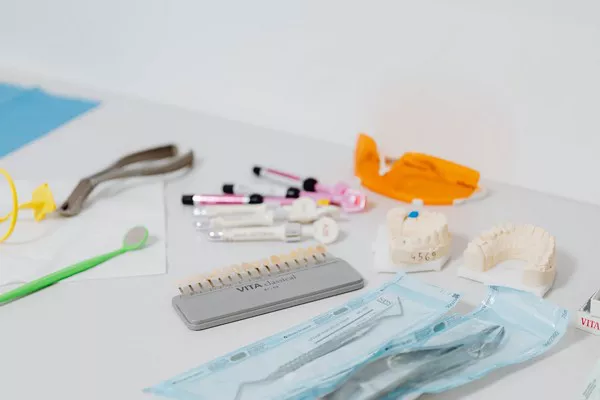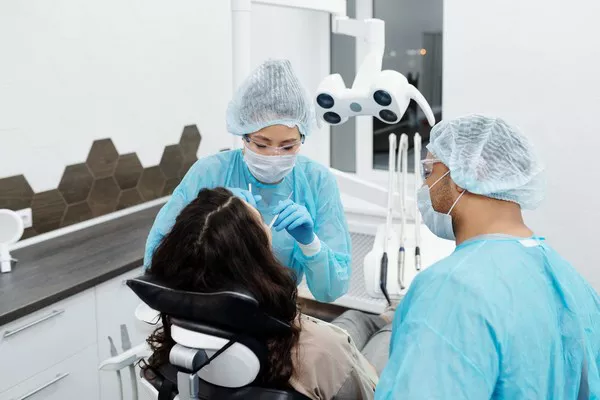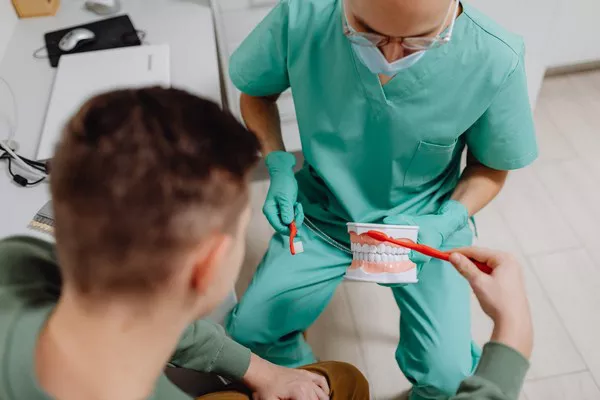Bone grafting is a common and often necessary procedure in the field of dental implants. It plays a critical role in ensuring the success of implants by providing a stable foundation and rebuilding the jawbone structure when needed. This comprehensive article will delve into the purpose of bone grafting, the various types of bone graft materials used, the procedure itself, the healing and integration process, potential risks and benefits, post-procedure care, costs and insurance considerations, and alternative treatments.
Purpose of Bone Grafting
Bone grafting is essential for several reasons in the context of dental implants:
Providing a Stable Foundation
Dental implants require sufficient bone mass for secure placement. In many cases, patients may have insufficient bone density or volume due to factors such as periodontal disease, trauma, or prolonged tooth loss. Bone grafting helps create a stable and robust foundation necessary for the successful integration of dental implants.
Rebuilding the Jawbone
Over time, missing teeth can lead to bone resorption, where the jawbone diminishes due to lack of stimulation. Bone grafting is used to rebuild the jawbone, restoring its natural shape and density, which is crucial for both functional and aesthetic reasons.
Enabling Dental Implant Placement
In some instances, the existing bone structure is inadequate to support an implant. Bone grafting allows for the augmentation of bone mass, making it possible to place dental implants in areas that would otherwise be unsuitable.
Types of Bone Graft Materials
There are several types of materials used for bone grafting in dental implants, each with its own unique properties and benefits. These materials can be categorized into four main types:
Autografts
Autografts involve taking bone from the patient’s own body, typically from areas such as the hip, chin, or tibia. This type of graft is highly effective due to its biocompatibility and high success rate in integration.
Advantages: High success rate, no risk of immune rejection, promotes natural bone growth.
Disadvantages: Requires a secondary surgical site, which can increase pain and recovery time.
Allografts
Allografts are derived from human donors and are processed by tissue banks to ensure safety and sterility. These grafts eliminate the need for a secondary surgical site.
Advantages: No need for additional surgery, widely available, and effective in promoting bone growth.
Disadvantages: Slight risk of disease transmission, although very low due to stringent processing.
Xenografts
Xenografts are obtained from animal sources, commonly bovine (cow) bone. These grafts are also processed to remove any organic material, leaving behind a mineral scaffold that promotes new bone growth.
Advantages: No need for donor site surgery, effective in maintaining volume and structure.
Disadvantages: Lower integration rate compared to autografts, potential for immune response.
Alloplasts
Alloplasts are synthetic bone graft materials, often made from materials such as calcium phosphate, hydroxyapatite, or bioactive glass. These materials are designed to mimic the properties of natural bone.
Advantages: No risk of disease transmission, customizable properties, and abundant supply.
Disadvantages: May have a lower rate of integration compared to natural bone grafts, potential for slower healing.
The Bone Grafting Procedure
The bone grafting procedure involves several steps, including preparation, placement, and healing phases. Here is a detailed outline of the process:
Preparation
Initial Consultation: The process begins with a comprehensive evaluation by a dental professional. This includes a thorough medical and dental history review, imaging studies (such as X-rays or CT scans), and a discussion of the treatment plan.
Anesthesia: On the day of the procedure, local anesthesia or sedation is administered to ensure patient comfort during the surgery.
Placement
Incision and Exposure: An incision is made in the gum tissue to expose the area where the graft will be placed.
Graft Placement: The chosen bone graft material is carefully placed into the deficient area. In cases where an autograft is used, bone is harvested from the donor site first and then transplanted to the recipient site.
Securing the Graft: The graft is secured in place, often with the use of membranes or other fixation devices to ensure stability and prevent displacement.
Suturing: The incision is closed with sutures, and the area is protected to promote healing.
Healing and Integration
The healing process for bone grafting involves several stages:
Initial Healing: In the first few days to weeks following the procedure, the body initiates the healing process. Swelling and discomfort are common during this period and can be managed with medication and care instructions provided by the dental professional.
Bone Integration: Over the next few months, the graft material gradually integrates with the existing bone. This process, known as osseointegration, involves the formation of new bone cells and the fusion of the graft with the natural bone.
Monitoring: Regular follow-up appointments are necessary to monitor the progress of healing and ensure that the graft is integrating properly. Imaging studies may be repeated to assess bone growth.
Typical Timeline for Healing
The overall healing and integration process can take anywhere from three to six months, depending on factors such as the patient’s overall health, the type of graft material used, and the specific site of the graft.
Risks and Benefits
Like any surgical procedure, bone grafting carries certain risks and benefits. Understanding these can help patients make informed decisions about their treatment.
Benefits
Improved Implant Success Rate: Bone grafting significantly increases the chances of successful dental implant placement.
Enhanced Aesthetics: Restoring the jawbone structure can improve facial aesthetics and prevent further bone loss.
Functionality: A stable foundation for implants ensures better functionality for chewing and speaking.
Risks
Infection: There is a risk of infection at the graft or donor site, although this is rare with proper care and sterilization.
Graft Rejection: While uncommon, there is a possibility that the graft may not integrate properly, necessitating additional procedures.
Pain and Discomfort: Post-surgical pain and swelling are common but usually manageable with medication and proper care.
Cost: Bone grafting can be expensive, particularly if additional procedures or advanced materials are required.
Post-Procedure Care
Proper post-procedure care is crucial for the success of the bone grafting process. Here are some guidelines for patients:
Immediate Care
Medication: Take prescribed antibiotics and pain medications as directed to prevent infection and manage discomfort.
Rest: Avoid strenuous activities for a few days to promote healing and reduce the risk of complications.
Oral Hygiene: Maintain good oral hygiene, but avoid brushing the graft site directly. Use an antibacterial
mouthwash if recommended by your dentist.
Ongoing Care
Diet: Stick to a soft diet for the initial healing period to avoid disturbing the graft site. Gradually reintroduce solid foods as healing progresses.
Follow-Up Appointments: Attend all scheduled follow-up appointments to monitor healing and address any concerns promptly.
Avoid Tobacco and Alcohol: Refrain from smoking and drinking alcohol, as these can impede the healing process and increase the risk of complications.
See Also: How Much Is A Canine Tooth Implant
Cost and Insurance
The cost of bone grafting can vary widely based on several factors. Here’s what patients can expect in terms of expenses and insurance coverage:
Potential Costs
Basic Graft Procedure: The cost of a simple bone graft procedure can range from $200 to $1,200 per site, depending on the material used and the complexity of the graft.
Additional Procedures: If additional procedures such as tooth extractions or sinus lifts are required, the overall cost can increase significantly.
Specialized Materials: Using advanced materials like growth factors or specialized membranes can also add to the cost.
Insurance Coverage
Dental insurance coverage for bone grafting varies by plan. Some insurance policies may cover a portion of the cost, particularly if the graft is deemed medically necessary for implant placement.
Coverage Variability: Coverage can vary widely, with some plans covering a significant portion of the cost and others providing minimal coverage.
Out-of-Pocket Expenses: Patients should be prepared for out-of-pocket expenses and should review their insurance policy and discuss options with their provider to understand what is included.
Alternatives
While bone grafting is often the best option for ensuring successful dental implants, there are alternative treatments and approaches that may be suitable for some patients:
Ridge Expansion
In cases where the jawbone is too narrow to support implants, a ridge expansion procedure can be performed. This involves splitting the bone and inserting graft material to widen the ridge, creating sufficient space for implants.
Distraction Osteogenesis
This technique involves the gradual movement of bone segments to lengthen the jawbone. It is typically used in more complex cases and can provide a stable foundation for implants without the need for extensive grafting.
Mini Implants
Mini implants are smaller in diameter than traditional implants and may be used in cases where bone density is insufficient for standard implants. They can be a less invasive and more affordable option, but they may not be suitable for all patients.
Conclusion
Bone grafting is a vital procedure for many patients seeking dental implants, providing the necessary foundation for successful implant placement and long-term oral health. Understanding the different types of bone graft materials, the steps involved in the procedure, the healing process, and potential risks and benefits can help patients make informed decisions about their treatment.
You Might Be Interested In






























